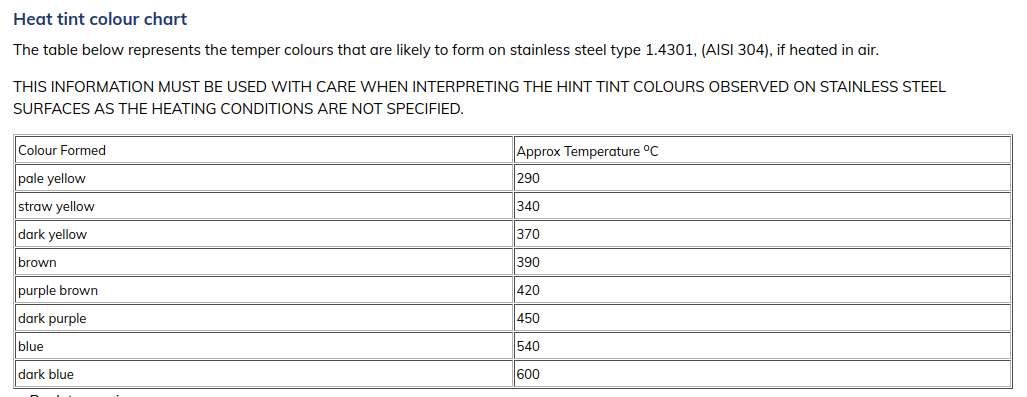First post here - I’ve been experimenting with creating art by selectively anodizing titanium. Patterning anodized titanium isn’t new, but this process allows me to create full pictures, which I think is the first time this has ever been done.
This piece started off as a photo of a beach at sunset that I color mapped into the anodized Ti spectrum and printed.
Ok, that idea and process and result is pretty fucking cool!
Thank you!
I think this is a very clever idea! Very cool! You mentioned that it was anodized to look like this [2]. The colors, to me, are reminiscent of the colors that steel produces when heated [1]. Is there any similarity in the process, or is this something completely separate?
References
- “Heat Tint (Temper) Colours on Stainless Steel Surface Heated in Air”. British Stainless Steel Association. Accessed: 2025-01-04T22:16Z. https://bssa.org.uk/bssa_articles/heat-tint-temper-colours-on-stainless-steel-surface-heated-in-air/.
- §“Heat tint colour chart”

- This chart shows the range of colours that form on the surface of stainless steel (described as an oxide layer), as a function of temperature, when it is heated.
- §“Heat tint colour chart”
- “Titanium Sunset”. @[email protected]. “Art Share” [email protected]. sh.itjust.works. Lemmy. Published: 2025-01-04T21:47:50Z. Accessed: 2025-01-04T22:30Z. https://sh.itjust.works/post/30589186.
[…] I’ve been experimenting with creating art by selectively anodizing titanium. […] This piece started off as a photo of a beach at sunset that I color mapped into the anodized Ti spectrum and printed.
Very similar! Both colors are formed by oxide layers on the surface, I think with stainless steel it’s a mixture of iron and chrome oxides. In the case of titanium there is only one oxide, TiO2, which is transparent crystal (in thin forms). The TiO2 layer is thin, on the order of hundreds of nanometers so the colors you see are a result of light waves constructively and destructively interacting with the transparent layer of TiO2 on the surface of the titanium sheet.
- “Heat Tint (Temper) Colours on Stainless Steel Surface Heated in Air”. British Stainless Steel Association. Accessed: 2025-01-04T22:16Z. https://bssa.org.uk/bssa_articles/heat-tint-temper-colours-on-stainless-steel-surface-heated-in-air/.
Yooo that is tight!!
How did you use the printout to anodize with?
I make the print by anodizing - I have a pen plotter I converted for this and I use the cathode as my ‘pen’ to print the image.
So you have a kind of conductive “pen” on the plotter and run a voltage across it?
Exactly - my “pen” is a stainless steel nail in a 3d printed housing.
It would be neat to do this with stainless steel and a pen torch.
Looks so cool!! Amazing idea and good work!!



